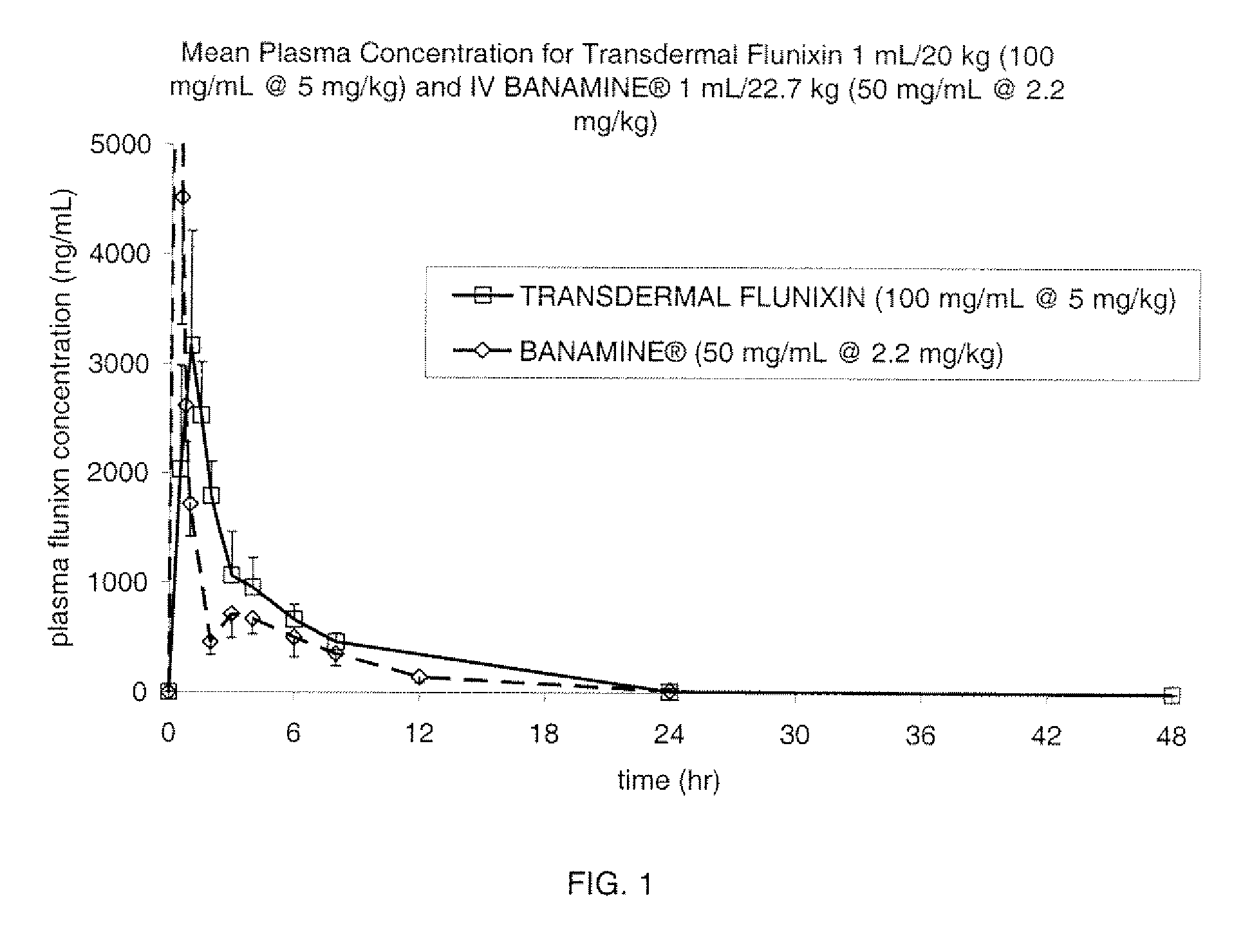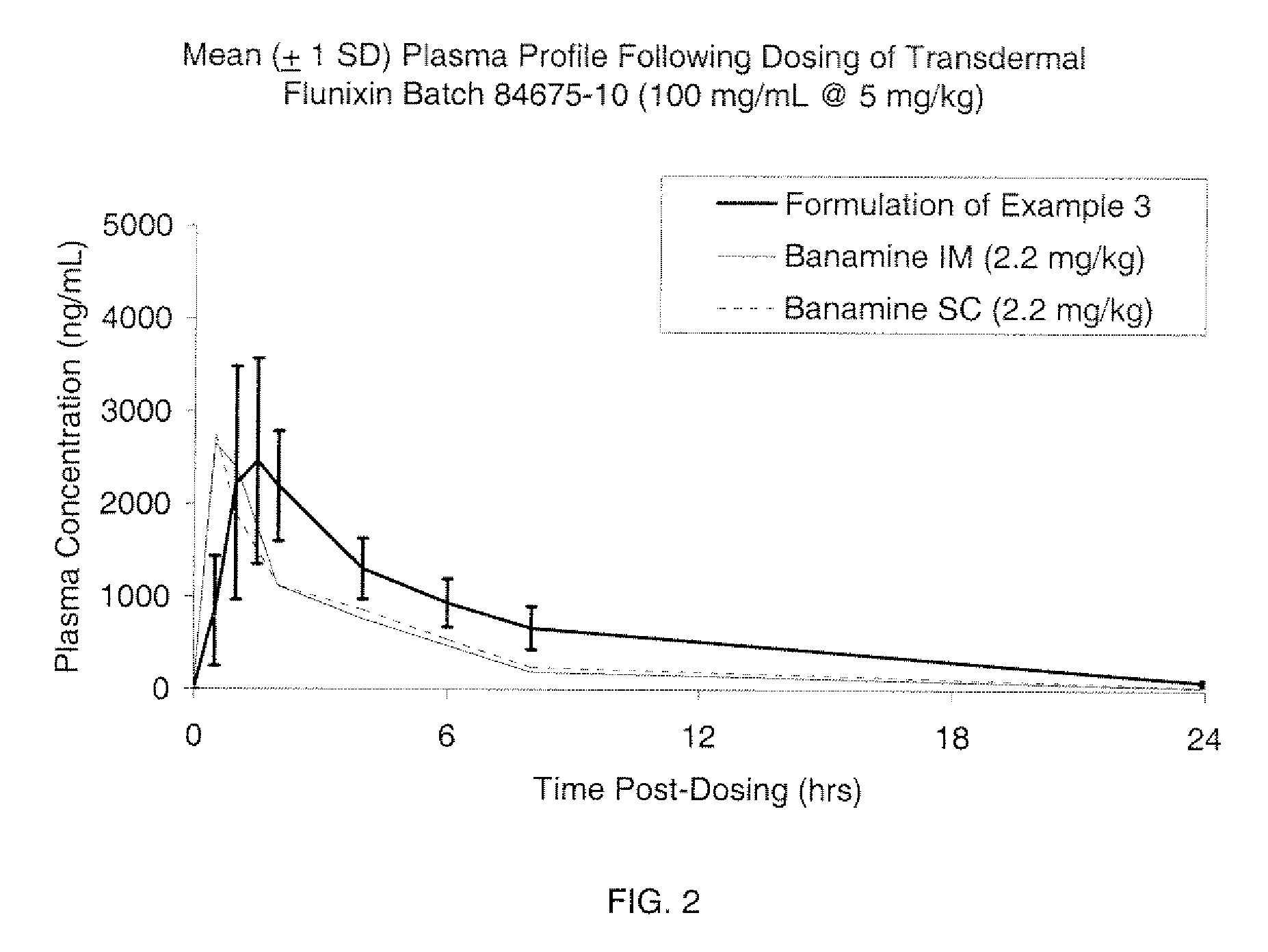Pharmaceutical compositions and method for treating inflammation in cattle and other animals
- Summary
- Abstract
- Description
- Claims
- Application Information
AI Technical Summary
Benefits of technology
Problems solved by technology
Method used
Image
Examples
example 1
[0083]
IngredientPercent (w / v)flunixin meglumine16.6%2-pyrrolidone35.0%Menthol10.0%isopropyl myristate10.0%isopropyl alcoholqs ADMonothioglycerol 1.0%
[0084]In order to prepare the composition of the present invention, the vehicle(s) or a portion of the vehicle(s), are added to the compounding vessel, followed by the remaining excipients and the actives. The combination is mixed until all solids are dissolved. Although not included herein, additives, such as those mentioned in the detailed description, are also included in the vessel and mixed into the formulation. The order of addition was not critical.
example 2
Pharmacokinetics of Flunixin in Product Described in Example 1
[0085]The Formulation of Example 1 was assessed in a pharmacokinetic study involving 6 cattle which received a single transdermal application of 1 mL / 20 kg (5 mg / kg flunixin). Blood samples for determination of flunixin concentration were collected at 0, 0.5, 1, 1.5, 2, 3, 4, 6, 8, 24 and 48 hours after dosing. The results are shown in FIG. 1, in comparison to IV dosing of Banamine® at 2.2 mg / kg. This study provided evidence that the pharmacokinetic profile of the formulation from Example 1, when dosed at 5 mg / kg flunixin, is similar to that of the IV dosing of Banamine® at 2.2 mg / kg.
example 3
[0086]
ExcipientConc (% w / v)Flunixin Meglumine16.60% 2-Pyrrolidone35.00% Isopropyl Alcohol8.00%Benzyl Alcohol20.0%Menthol10.0%Propylene Glycol10.0%Dicaprylate / Dicaprate
[0087]The procedure to prepare the composition herein was the same as that done in Example 1.
PUM
| Property | Measurement | Unit |
|---|---|---|
| Fraction | aaaaa | aaaaa |
| Fraction | aaaaa | aaaaa |
| Fraction | aaaaa | aaaaa |
Abstract
Description
Claims
Application Information
 Login to View More
Login to View More - R&D
- Intellectual Property
- Life Sciences
- Materials
- Tech Scout
- Unparalleled Data Quality
- Higher Quality Content
- 60% Fewer Hallucinations
Browse by: Latest US Patents, China's latest patents, Technical Efficacy Thesaurus, Application Domain, Technology Topic, Popular Technical Reports.
© 2025 PatSnap. All rights reserved.Legal|Privacy policy|Modern Slavery Act Transparency Statement|Sitemap|About US| Contact US: help@patsnap.com



